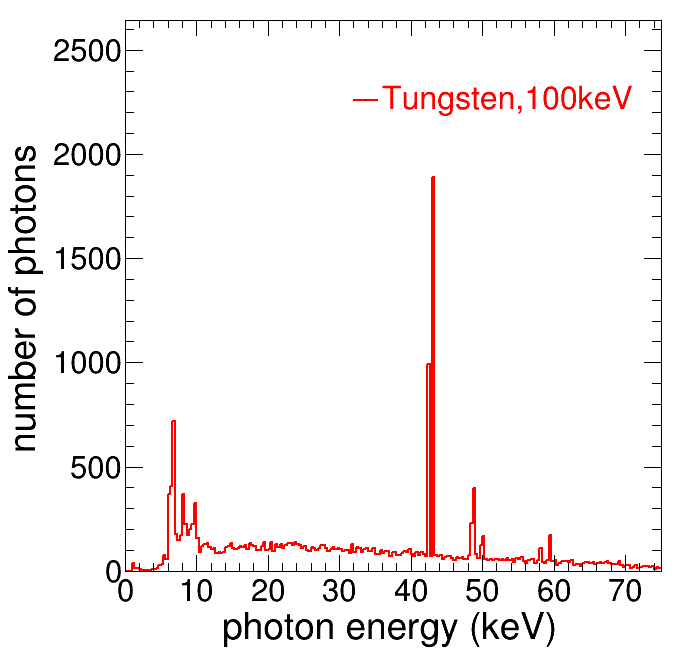Hi @maire @guatelli @idrissi_abdelghani,
Thanks for your help. Now I can generate the x-ray spectrum with characteristic peaks. But except the characteristic peaks of tungsten targets currect results also contain the characteristic peaks of detector material. As the plot shown the spectrum has characteristic peaks of tungsten and it has a peak at 43 keV, which is the characteristic peaks of detector material(Gd). How can I avoid the characteristic peaks of the detector materail.
